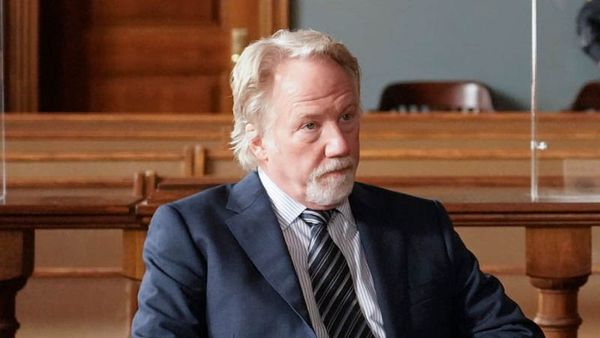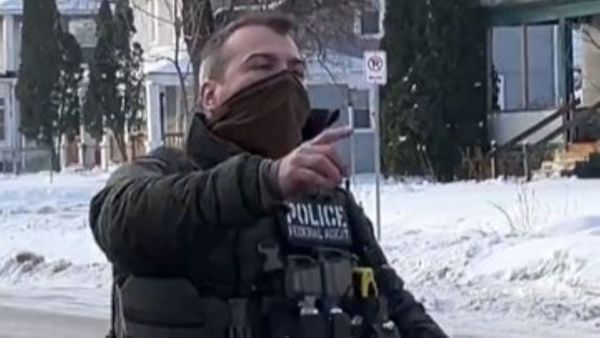
In November 2022, General Mark Milley, chairman of the U.S. Joint Chiefs of Staff, sent shock waves through Western capitals when he declared that the war in Ukraine is unwinnable by purely military means. Milley suggested that Ukraine is now in a position of strength and that this winter might be the moment to consider peace talks with Russia. He also recalled World War I, when the adversaries’ refusal to negotiate led to millions of additional deaths, suggesting that failure to “seize” the moment could lead to greatly more human suffering. His remarks challenged not only the position of Kyiv but also that of many of its Western backers, including Poland, the Baltics, North America, and the United Kingdom, which have endorsed Ukraine’s pursuit of complete military victory. As Estonian Prime Minister Kaja Kallas argues in Foreign Affairs, “The only path to peace is to push Russia out of Ukraine.” Russia’s defeat, Ukrainian membership in NATO, the trial of Russia’s political and military leadership for war crimes, the payment of damages—these are essential to peace, she concludes. Ukrainian President Volodymyr Zelensky’s ten-point peace plan unveiled in November takes the same approach.
If Milley’s comments were controversial, however, they pointed to a larger problem with seeking complete victory. Complete victory could require a very long war, and it would also mean that its ultimate duration would depend on political factors beyond the West’s control. For those calling for complete victory, the West must simply keep supplying Ukraine with the weapons and resources it needs to continue fighting, and wait for Russia to lose and, ideally, for Putin to go.
But a grinding war of attrition has already been hugely damaging for Ukraine and the West, as well as for Russia. Over six million Ukrainians have been forced to flee, the Ukrainian economy is in freefall, and the widespread destruction of the country’s energy infrastructure threatens a humanitarian catastrophe this winter. Even now, Kyiv is on financial life support, maintaining its operations only through billions of dollars of aid from the United States and Europe. The costs of energy in Europe have risen dramatically because of the disruption of usual oil and gas flows. Meanwhile, despite significant setbacks, Russian forces have regrouped and have not collapsed. The best plausible outcome for Ukraine would be the retreat of Russian forces to the lines of control that existed before the February 2022 invasion. But even if the Russians are swept back to the status quo ante, many Ukrainians fear that Moscow will simply retrench and regroup, waiting for the next opportunity to invade. It is by no means clear that military deterrence would be enough to secure the resulting peace.
What is missing, then, is a coherent political plan to bring an end to the suffering, and to reassure Ukrainians that Russia will not begin a new war at the earliest opportunity, even if Putin remains in power. That will require the Russians to accept a defeat but also require the Ukrainians to accept that complete victory may be unobtainable. But if those goals are to be achieved, Western populations will need to accept the end of Russia’s pariah status and its “return to Europe” while providing credible security assurances to Kyiv. In other words, the West must formulate a major policy vision that obviates the desire of Ukraine and its staunchest supporters to have Russia smashed and neutralized. If the United States and its partners fail to lay out such a plan, the chances for Milley’s scenario will grow: a war of attrition, the danger of escalation and catastrophe, and a troubled aftermath to the war.
RUSSIAN RESILIENCE
Although it lacks the broad and deep support that Ukraine has received from its partners and allies, Russia is stronger than many would have predicted. Its army, economy, and leader all seem stable. Though the Russian military has been dispirited by repeated defeats, it has survived. The coming winter will be a crucial test for the Russian army’s ability to endure, but military experts do not predict its collapse. Many more defeats and retreats would be needed to change this assessment.
The same is true of Russia’s economy. Many confidently predicted that Russian trade and industry would be crushed by the weight of sanctions imposed by Western governments. Such extreme economic pressure, it was suggested, could be sufficient to force Moscow to withdraw from Ukraine. But economic pressure is rarely enough to end a war. Russia’s economy has shrunk in 2022, but by just three percent, significantly less than some had predicted, and its financial system has proved sustainable and macroeconomically stable. Russia is cut off from many Western supply chains, but it has an extremely large current account surplus, which allows the country’s companies and government to find much of what they need elsewhere. During the Cold War, sanctions did not force Moscow to withdraw from Eastern Europe, and today they are unlikely to force Russia to withdraw from Ukraine. The price cap on Russian oil set by the G-7 in early December may hit Russia’s import revenues, but even Western optimists are uncertain how effective it will be. If, despite Western pressure, Russia’s war machine remains funded and equipped, the result will be a bloody stalemate.
As the main architect of this war, Putin is also aware of the potential consequences of defeat. His misreading of the history of Ukraine and Russia led him to assume that his invasion would experience quick success. But although Putin may misunderstand the origins of the Ukrainian nation, his grasp of the important lessons of the twin collapses of the Russian and Soviet states is strong. The Russian Empire fell in 1917 when its ruler, Tsar Nicholas II, abdicated. The Soviet state collapsed after President Mikhail Gorbachev’s military and security leaders betrayed him and he lost control of the capital. Putin has made sure that he remains in firm control of the military, the security services, and the Russian population. The capital is calm and well fed, and the Kremlin has ensured that no army of unhappy conscripts is stationed nearby, as was the case in March 1917. Those who might have led a revolution have instead fled abroad, while rebellions in Dagestan or Buryatia—poor and remote areas in the Caucasus and Siberia, respectively—could be managed.
For the moment, a majority of Russians continue to support the Russian government and are not ready to accept defeat. Many regard Crimea and its stronghold of Sevastopol as worth fighting for. And for many, Putin remains the guarantor of Russian sovereignty and stability. To elite and even many ordinary Russians, the outcome that the Ukrainians and their backers dream of—the defeat of the Russian army and the downfall of Putin—is a political nightmare, threatening economic chaos and lawlessness.
Ordinary Russians have accepted their government’s explanation that Western sanctions were imposed to crush the Russian people.
Given this complicated dynamic within Russia, it is unlikely that military defeats can be enough to make the Kremlin sue for peace. But the West’s current approach to simply let the war continue, though morally satisfying and politically popular, is risky. It subjects Ukrainians to the continual horrors of conflict. The death toll and financial cost of fighting will continue to rise. It feeds Putin’s narrative that Russia is in an existential battle with the West, and it encourages Russian nationalists’ belief that Russia must either win or perish. Western denunciations of Russia’s war crimes will not be enough to change Russian minds. Although increasing numbers of Russians no longer trust their own government and media, they do not trust their Western counterparts, either.
Today, those Russian elites who mistrust the West's intentions as well as Putin’s may regard the prospect of peace as worse than the continuation of the war. Ordinary Russians may well agree: they have accepted their government’s explanation that Western sanctions were imposed to crush the Russian people. Western commentators have given fuel to this view by arguing that the Russians must be punished for what their country has done to Ukraine. Those Russians with access to the Western media on the Internet do not accept that Russia is a “terrorist state” or an “imperialist nation.” Russian elites and many ordinary Russians believe that it is in their best interests to rally around the flag.
Of course, political change in an autocratic system can be quick and complete. The power of Russia’s aging dictator rests on sowing and maintaining fear, apathy, cynicism, and mistrust among the country’s elites. With more Russian defeats, and further mobilization, millions of Russians may begin to blame Putin, just as their predecessors blamed Tsar Nicholas and Gorbachev. Combined with a crisis of morale, apathy, and exhaustion among the troops, such a shift in public opinion could generate a political crisis. It would be the moment when Russian political elites would have to decide whether to compromise with the West or fight to the end.
MAP AND CARROTS
In November 1918, U.S. President Woodrow Wilson’s Fourteen Points convinced Germany’s leadership that they would be fairly dealt with and persuaded them to accept an armistice. This compromise ended World War I. The weakness of the German army and its leaders' realization that Germany had lost the war increased the attractiveness of Wilson's proposals. Rather than allow the remnants of their forces to be annihilated and their country invaded, they accepted Wilson’s terms that promised not to punish Germany. This is the approach that the West must follow today. The West must be prepared to offer a map for the Russian elites and general population, outlining how they can end their isolation, free themselves of sanctions, and remove their pariah status.
This map should begin by explaining the risks of continuing the war. It should make clear that Russia cannot win. Ukraine’s Western-supplied military equipment is superior and its forces are determined. If Moscow keeps fighting, it will therefore sustain more defeats and casualties and place itself in increasing danger of calamitous and violent collapse. Russia’s future, the plan must gently explain, will be one of economic degradation; it risks becoming a weakened dependent of China. By accepting that it must end the war, the Russian government will spare itself the humiliation of a larger unraveling.
Then the map must outline the gains that Russia will make if it chooses the path of de-escalation. Specific content will have to be determined through discussion, but some elements are obvious. First, a pledge that Russia’s sovereignty and integrity will be respected after a peace settlement with Ukraine. As unlikely as it may sound today, a framework, other than NATO, should be convened to ensure Russia’s place in Europe’s security architecture. Revisiting Gorbachev’s vision of “a common European home,” marked by rapprochement rather than deterrence, and dismissed by both the West and Russia today, is a necessity. Second, the map must affirm that Western governments will recognize and respect Russia’s leadership, provided that Moscow rigorously obeys the UN Charter and international law, as well as honors Russia’s international treaties, agreements, and commitments. Third, the West should lay out a timetable for returning Russia’s frozen financial assets after demands for demilitarization and withdrawal are met. Finally, the map must declare that, after the end of the war, all international economic obstacles will be removed.
Until now, the West has used only sticks to coerce Russia to stop the war. The map must include some carrots, as well. The road to a peaceful settlement should be linked to a gradual lifting of sanctions. But perhaps the biggest carrot is international legitimacy. The West will have to grant international recognition to some people and groups that constitute part of today’s regime. The Russian side at future peace talks will not consist of democrats, antiwar activists, and leaders in exile. Members of the military and the Russian bureaucracy will inevitably sit at the negotiating table. Providing at least some Russian leaders, who will opt for peace, with a choice between The Hague tribunal and the chance to take part in the creation of a new peaceful Russia would be a powerful stimulus for the road to peace and an end to the war.
SELLING PEACE
A vision for a postwar Russia should be aligned with a Western vision of a postwar Ukraine, without diluting the boundary between an aggressor and a victim. Though Western populations will take some convincing, it will be far more difficult to persuade Ukraine to agree on the map and the carrots for Russia. Zelensky’s plan focuses on justice and retribution for Ukraine; it is all about coercing Russia to comply. Ukraine and its eastern allies do not want to let Russia off the hook, and they are opposed to any security guarantees to Moscow. They will demand that peace terms be announced only after Russia accepts its defeat, and perhaps even after Putin is gone. The U.S. government and other Western powers must explain that such an absolute approach will prolong the fighting and Ukraine’s own suffering. Publicizing a map toward negotiations now, while Putin continues his barbaric war and millions of Ukrainians suffer, does not constitute appeasement of Russia or condone Moscow’s aggression. On the contrary, it would be a prudent, strategic, and realist political move by the West and Ukraine to address the large and growing number of Russians who would prefer peace but abhor a choice between war and defeat.
Crimea is a problem. Ukrainians are determined to recapture the peninsula, which they regard, justifiably, as stolen Ukrainian territory and a beachhead for Russian aggression. The West, however, has serious reasons to fear that Putin would do whatever it takes to prevent the fall of Crimea. The peninsula is the greatest obstacle to any talks between Moscow and Kyiv. An explicit Western demand to return Crimea as a precondition for peace talks will only rally more Russians to the side of war. Sometimes it is a wise strategy to leave an intractable subject for future negotiations.
The longer this war continues, the worse its consequences. World War I toppled great empires and dynasties across Europe, sowed the seeds of World War II, and led directly to the rise of Mussolini and Hitler. Historic feuds between Germany and France over Alsace-Lorraine, and between Serbia and Croatia over Bosnia, led to lethal consequences for both sides. The wounds of these conflicts took generations to heal.
The long-term effects of the war in Ukraine cannot be predicted with any certainty. But an awareness of the destabilizing effects of long and highly destructive wars should prompt reflection of the need for a more comprehensive strategy, one that can offer Ukraine its security and Russia its future. Rather than waiting to react to Moscow and Kyiv’s latest actions or hoping for Putin’s imminent downfall, the West must take the initiative at last.







